Top #iamaMariner bottled note stories
What did you first think of when you read that phrase: message in a bottle? Maybe you thought of the 1979 Police song S.O.S (Message in a Bottle)? And don’t pretend the chorus isn’t stuck in your head now (its been replaying in mine for days).
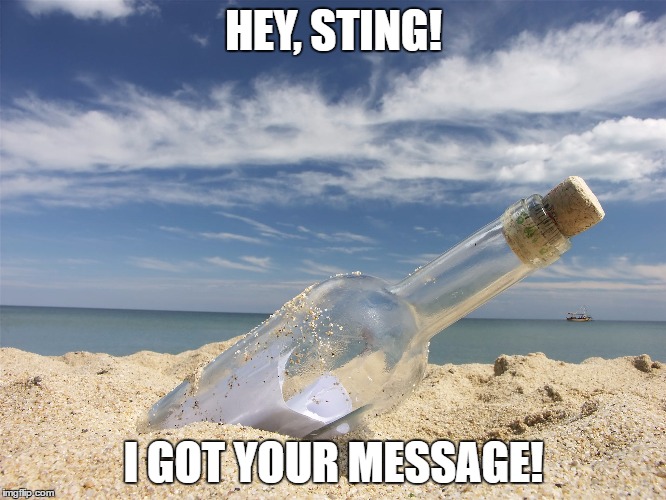
Maybe instead your mind went to the 1999 romantic drama starring Kevin Costner, or the Nicholas Spark’s book that movie is based on? I have neither read, nor seen these works, but my sister (and SparkNotes) tell me the title, Message in a Bottle, does actually define the plot as you would imagine.
Or maybe you simply fantasized about the faraway connection such a message could bring.
#iamaMariner is all about people connecting to the water, and to other people through the water. Notes from faraway places are a very tangible way to make that connection…and (I’ll admit) it’s very romantic. So why did this sentimental activity start? Science, of course! Wait, what? A love story that starts with science?
History
The earliest alleged bottle-in-sea action was performed by Greek philosopher Theophrastus, circa 310 BC. He apparently threw bottles into the Mediterranean Sea trying to prove his theories on ocean currents, but if anyone ever responded to his bottles we do not have written evidence today. His theories about ocean currents were certainly correct, though, and oceanographers throw bottles into the ocean to track currents even into the present. I implore you, please finish reading before you run out to chuck your note into the sea!
In fact, the current world record for the oldest message in a bottle found was made earlier this year with the discovery of a 131 year-old German oceanographic message sealed in a gin bottle! It was located in Australia and research has proven that it was very purposefully dropped from a German vessel named Paula on June 12, 1886 in the Indian Ocean.
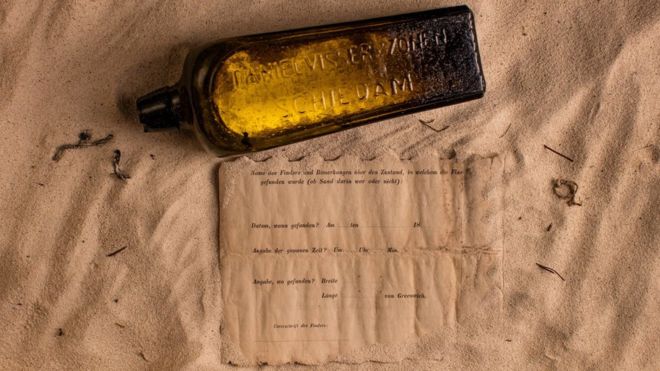
Still missing the romance? The romantic notion of bottle to ocean throwing was popularized in the Victorian era with authors like Victor Hugo (The Man Who Laughs, 1869, also see #5 in this blog), Edgar Allen Poe (“MS. Found in a Bottle”, 1833), and Charles Dickens (“A Message from the Sea”, 1860). Victorian newspapers even ran weekly columns of the recent bottle finds, though many of them were likely fabricated.
Top Stories:
There are so many compelling stories that it is impractical to give you a complete list here. Instead, I present you with my top “message in a bottle” stories. They all have a sense of romance, though maybe not in the most traditional sense of the word (e.g we’ll be using the “excitement and deferment from the everyday” definition).
My description of mariner is “someone with a connection to the water”, did you think my ideas on romance would be strict?
5) Queen Elizabeth’s “Uncorker of Ocean Bottles”
In the 1560s, the English Queen expected messages from spies to wash up on the English shore and did not want them to fall in the wrong hands. Therefore, she named some poor sap, I mean lucky bloke, the only person in the whole country that could open washed up bottles, or “Uncorker of the bottles of the Ocean” as his official title read. Anyone else reading such a note would be put to death.
Cool story, right? Too bad it’s probably not true. This appears to come from a novel written by Victor Hugo in 1869. The novel details fictional characters who briefly discuss Queen Elizabeth’s “Uncorker of the bottles of the Ocean
s” to move the fictional story along. Thankfully, someone else has put in the time and research necessary to disprove this story, so that you and I can do other things (find his article in the sources at the end of this blog).
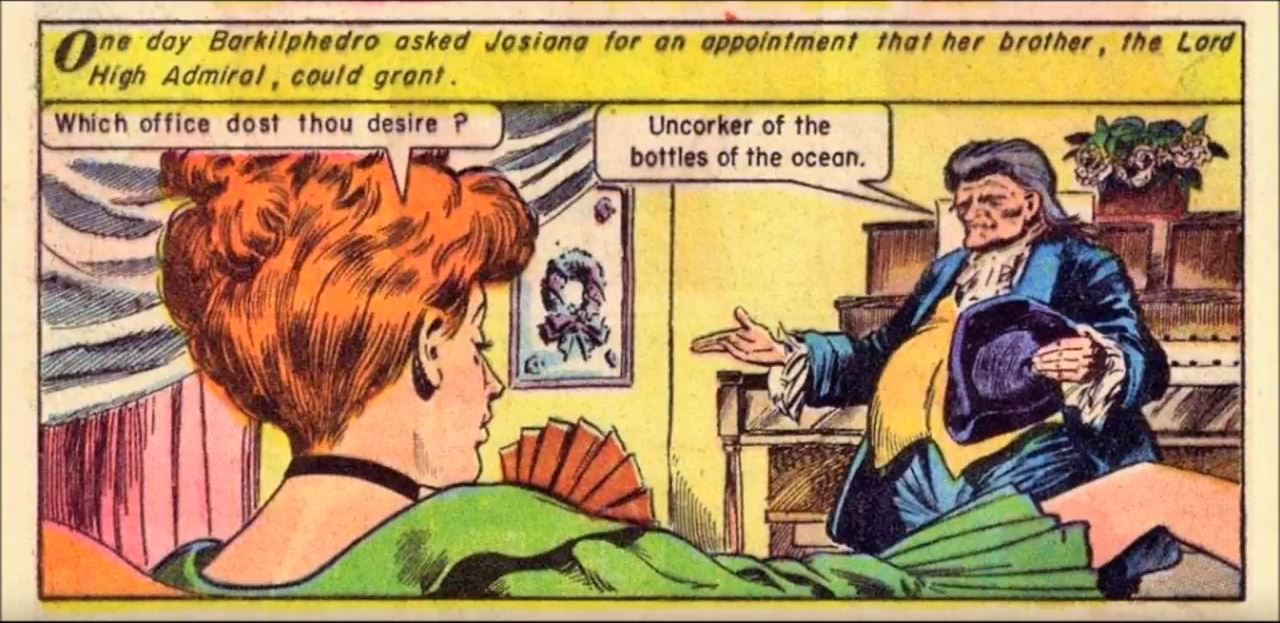
4) A real life love story
Stop screaming at me, reader! Here is a real love story: In 1955, Swedish sailor, Ake Viking, threw a message in a liquor bottle overboard his ship “To Someone Beautiful and Far Away” (good impression, right?). Two years later he received a reply, “I am not beautiful, but…”. A 17-year-old girl, named Paolina explained to him that she had found his message on a beach in Sicily and had the local priest translate his “charming letter”. The two began writing back and forth. In 1958, Ake sailed to Sicily and married Paolina. Top that, match.com!
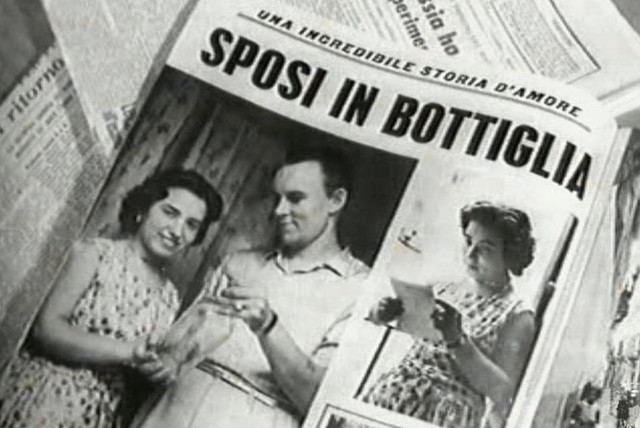
3) Shipwrecked!
In 1784, Japanese sailors set out to find buried treasure in the South Pacific. A storm arose and 44 men were stranded on an exposed portion of coral reef. The crew perished, but before he died from starvation and dehydration, Chunosuke Matsuyama carved their story on a piece of coconut tree bark, sealed it in a bottle and tossed it to sea. The message was found in 1935 (approximately 150 years later) in Hiraturemura, the village in Japan where Matsuyama was born.
Like this story? Me too! Unfortunately, it is probably also a myth. I have so many questions: How did Chunosuke get coconut tree bark on a spit of coral reef? If they had coconuts, why weren’t they eating/drinking them? It seems highly unlikely that this is real and no solid source has thus far popped up to prove otherwise. If you find the source material, reader, I would be glad to see it!
2) The past speaks to the present
In 2012, a Long Island park employee was cleaning up debris from hurricane Sandy and found an old ginger ale bottle with a short message and phone number inside. He called the phone number and excitedly left a message repeating the bottle’s note. Hours later, Mimi Fery called back crying. The message was written by her daughter, Sidonie, during a trip to the island at age 10, and quoted her favorite movie, Bill and Ted’s Excellent Adventure, 1989. A kid after my own heart.

The bottle landed a mere two miles from the place it was thrown. Mimi thinks someone finding the bottle and calling her was Sidnoie sending a message not to worry. In 2010, Sidonie fell from a cliff in Switzerland and died. “Be excellent to yourself, dude,” she wrote the decade before.
1) A WWI soldier’s legacy
On September 9, 1914, Private Thomas Hughes wrote a short note to his wife, sealed it in a bottle, and tossed it over the side of a ship. The note was an experiment. “I am writing this note on the Boat and dropping it into the sea, just to see if it will reach you…Ta Ta Sweet for the present, Your Hubby,” he wrote. Thomas was crossing the English channel on a troop transport bound for France, and the front line of World War I. Only twelve days later, Thomas and 40 of his fellow Durham Light Infantry Men were killed. His body was never recovered.
In 1999, a fisherman, Steve Gowan, found Thomas’s bottled note at the meeting point of the Thames and the English Channel. Unable to easily identify the Hughes family, Steve began a search which was picked up by newspapers all over the country. Eventually, a distant relative heard the story and gave Steve the families contact information. Steve flew to New Zealand and met Emily Hughes Crowhurst, Thomas’s (then 86-year-old) daughter; her mother, Elizabeth died in 1979.
Emily was only two years old when Thomas died, but was very proud of her father’s service – she even wore his medals to commemorative events throughout her life. Of the bottle’s discovery, she said, “I only have a few photos of my father but I spent most of my life trying to find out more about him”. She donated the message and bottle to the Durham Light Infantry Museum, saying, “I feel that I now have a piece of him…My father was a British soldier and it should be kept here”. Emily died in 2014 at 101 years old, close to 100 years after her father’s death.
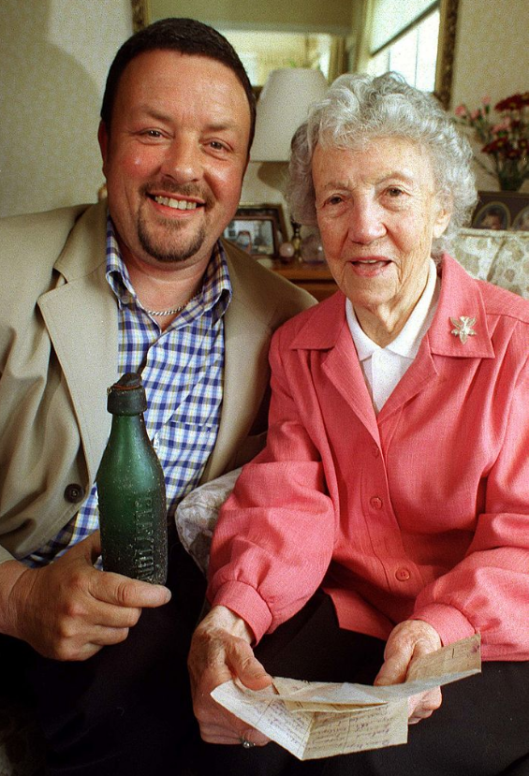
Dry your eyes, reader. I am sobbing while typing, so I can only image you also need a Kleenex.
Modern Alternatives
Now for the fun part! How can you participate in cross-sea communications? Easy! And all without throwing bottles, that may or may not ever reach another person, into the ocean.
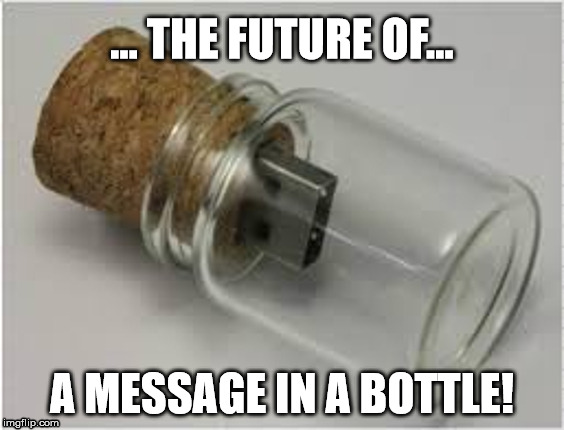
Your emails, tweets, .gifs, and texts already travel via submerged cables! Hold on, I thought that was done by satellite. Fair point, oh smart one. You’re right…and wrong. Cell phone signals and even wifi connections travel to the closest tower and cable connection. Some signals can and do travel via satellite but reception would be pretty spotty if that’s all we relied on. More and more, carriers and corporations are running fiber-optic cables for your messages, pictures, and videos to travel along.
You’ve probably seen commercials for FiOs, right? Well, these cables run underwater, too! In fact, there is an estimated 1.2 million kilometers of submarine cable globally. So when you send an electronic note to your family or friends overseas, you’re note is traveling through the ocean(s) within seconds. And while you read this blog, you and I may be connected through the sea, too! Pretty cool, right? And so much more reliable than pitching a note out with the tide.
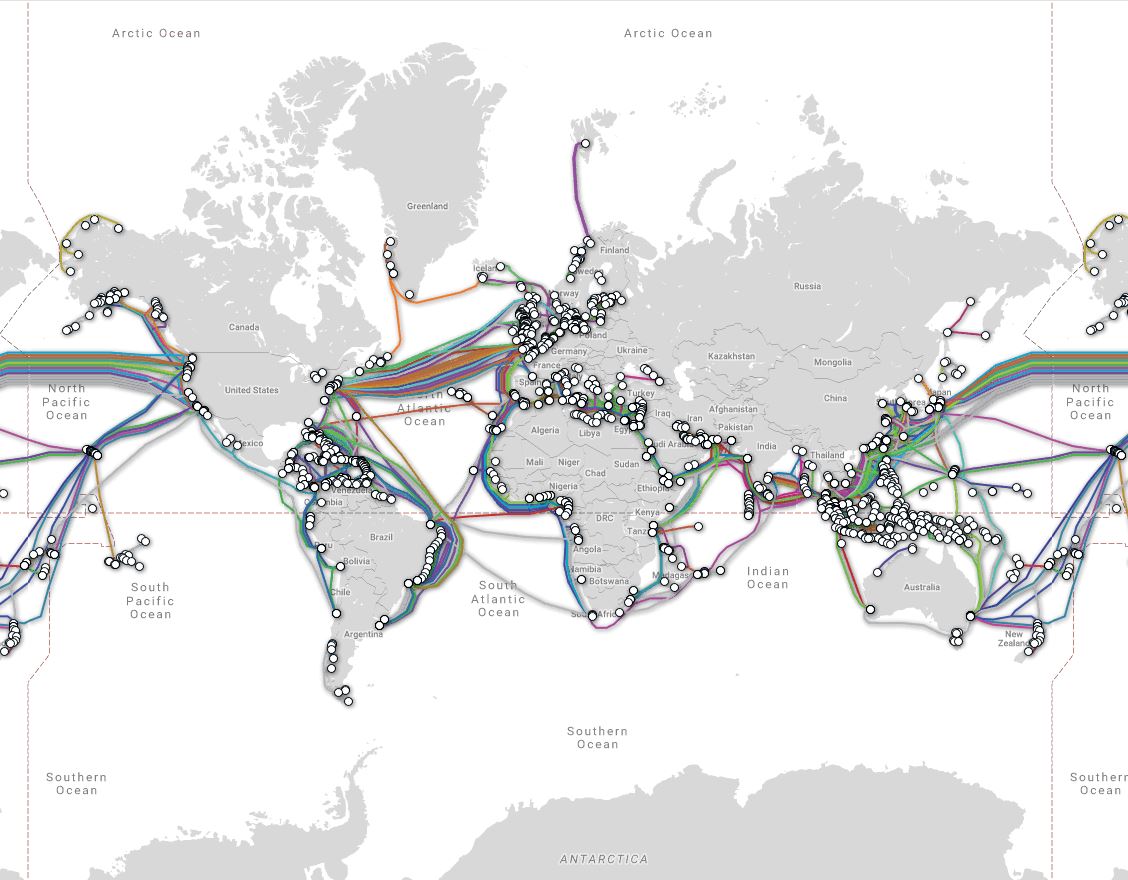
Okay, okay, this style of communication isn’t as romantic as throwing bottles into the ocean, but why litter? Yes – message in a bottle throwing is considered littering and there are countless places where it is against the law (I take no responsibility for the legality of your actions).
Did you know that there is a collection of plastic more than 600,000 miles wide in the Pacific? Do you want to contribute to that? I challenge you to be part of the ocean conservation solution, reader, not part of the problem. Tune in for the next blog to learn more about plastics in the ocean and the amazing #mariners who are changing that situation!
Sources:
- https://www.kymillman.com/oldest-message-in-a-bottle/
- https://books.google.com/books?id=v_AcDQAAQBAJ&pg=PT35&lpg=PT35&dq=chunosuke+matsuyama&source=bl&ots=7kYcyR361n&sig=nxTEKLYstiE9HVd0qodtx6IM9mU&hl=en&sa=X&ved=2ahUKEwjdoOryhpDdAhUsh-AKHdhfDTc4FBDoATADegQIBxAB#v=onepage&q=chunosuke%20matsuyama&f=false
- https://messageinabottlehunter.com/message-in-a-bottle-myths/queen-elizabeth-official-uncorker-of-ocean-bottles/
- https://pcmlifestyle.com/2017/11/love-story-good-true/
- http://www.nydailynews.com/news/national/tragic-sidonie-message-bottle-floats-home-article-1.1396806
- https://www2.telegeography.com/submarine-cable-faqs-frequently-asked-questions
- https://www.submarinecablemap.com/#/
- https://messageinabottlehunter.com/message-in-a-bottle-reunited-woman-with-father-85-years-after-his-death/#more-7263